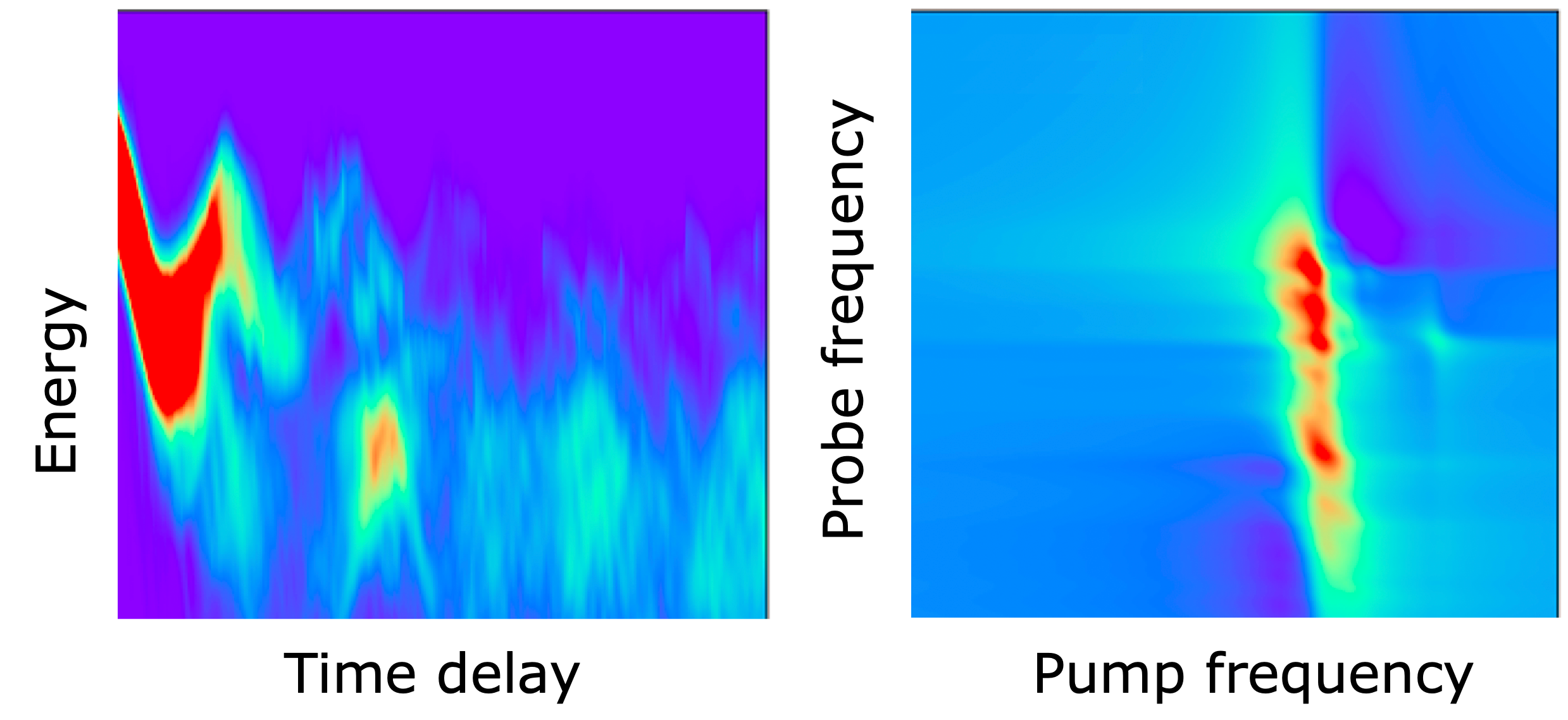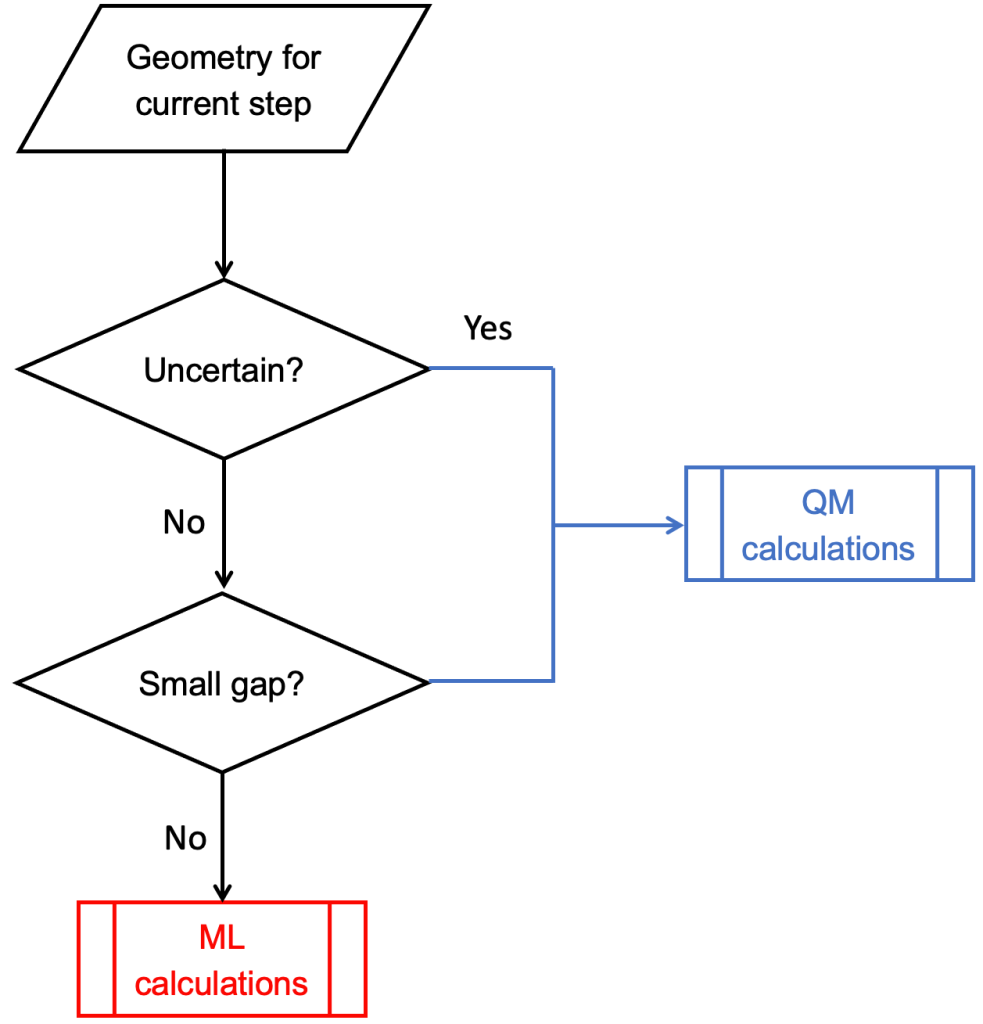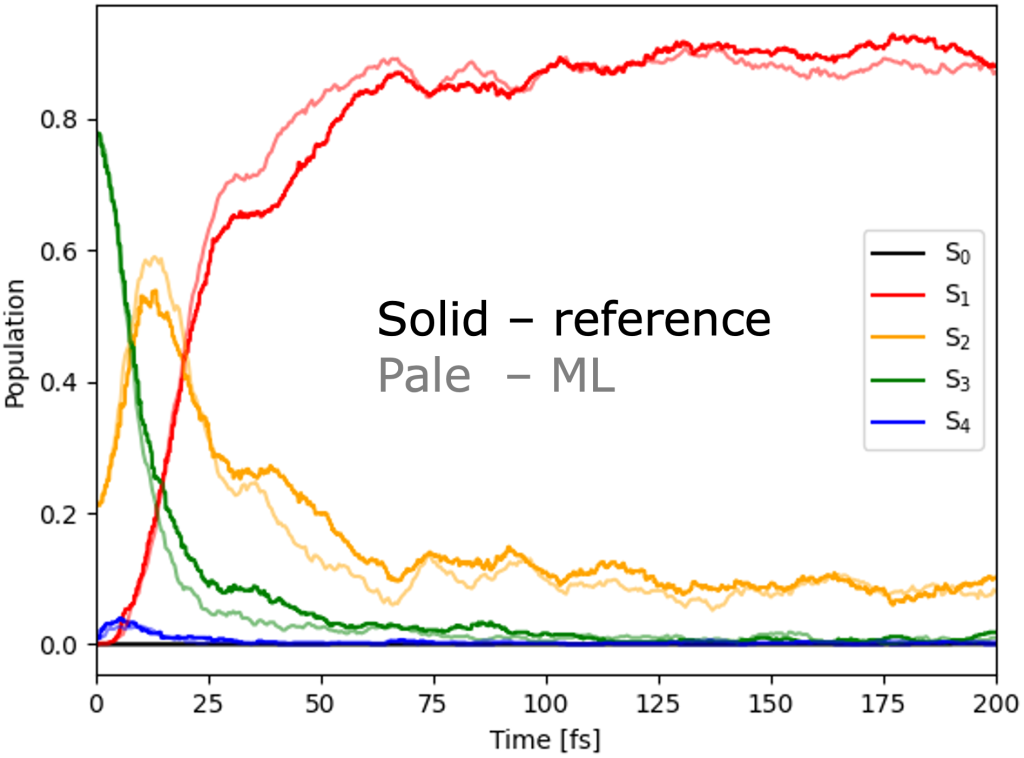AI-enhanced nonlinear time-resolved spectra assisted by MLatom@XACS
Published Time: 2024-02-28 15:01:08

AI-accelerated nonadiabatic dynamics reduces the cost of the ab initio simulations of nonlinear time-resolved spectra. We have developed a robust protocol and demonstrated its feasibility for calculating stimulated emission contributions in transient absorption pump–probe and 2D electronic spectra of pyrazine. The study is published in J. Phys. Chem. Lett.
Time-resolved spectra are often used to obtain deeper insight into the electronic structure and photophysical behavior of molecules. Their simulation is, hence, of high interest and protocols based on on-the-fly surface hopping nonadiabatic dynamics were suggested but they are costly. Thus, we set to reduce the cost by applying ML.
The costliest part of the simulations is the propagation of many (hundreds) of nonadiabatic dynamics trajectories, which requires hundreds of thousands and sometimes millions of quantum mechanical calculations of ground and excited-state energies and gradients. The time-resolved spectra simulations also require the calculation of the transition properties (oscillator strength or transition dipole moments). It is not surprising that many studies were reported with ML acceleration of nonadiabatic dynamics (see, e.g., our book chapters [1] and [2]). The general recipe of these approaches, which we also follow, is training ML potentials for all electronic states involved and propagating dynamics with these potentials rather than with quantum mechanical methods. Despite all the efforts, such simulations are still far from routine as the stable treatment of the regions near conical intersections is very challenging.
To ensure the stability of the ML-accelerated dynamics, we put in place fail-safe protocols. One of them is uncertainty quantification of the ML predictions by checking the deviation between the predictions of two ML potentials (similar to what we have also done for heats of formation). Another one is mandatory switching to quantum mechanical calculations in the regions of small energy gaps between the electronic states as we have suggested in 2018.

Given the challenge of learning nonadiabatic couplings, we avoid them by using the approximation based on Landau–Zener formalism (such alternative approximations are common in ML-accelerated nonadiabatic dynamics and, previously, we also used Zhu–Nakamura formalism for the same reason). In addition, the selection of a suitable ML potential proved to be crucial. We opted for ANI-type ML neural network potentials as they showed in our previous benchmark an excellent cost-performance trade-off. These networks were also used for learning the required oscillator strength, similar to our ML-nuclear ensemble approach for accelerated simulation of the UV/vis absorption spectra.
The resulting protocol allowed us to obtain the state population dynamics in excellent agreement with the reference purely quantum mechanical results:

State population dynamics of pyrazine. Solid lines – reference (population dynamics with the quantum mechanical ADC(2) method), pale lines – ML.
The good population gave a solid basis for obtaining precise time-resolved spectra.
The paper is the result of the hard work of Dr. Sebastian Pios in Dr. Lipeng Chen’s group in the Zhejiang Laboratory with lots of discussions and contributions from everyone involved including Max Gelin and Arif Ullah. We also thank my group members involved in related projects for the valuable exchange.
The code, required data, and examples are currently available on GitHub: https://github.com/psebastianzjl/pyrazine_stimulated_emission. The ML was based on the older version 2 of MLatom.
We are continuously preparing better and faster approaches for excited-state simulations. Soon we will release a much more user-friendly and more efficient integrated protocol based on the new MLatom 3 @ XACS package, for which we have a fully functioning development version. Stay tuned!
Paper
Sebastian V. Pios, Maxim F. Gelin, Arif Ullah, Pavlo O. Dral, Lipeng Chen. Artificial-Intelligence-Enhanced On-the-Fly Simulation of Nonlinear Time-Resolved Spectra. J. Phys. Chem. Lett. 2024, 15, 2325–2331. DOI: 10.1021/acs.jpclett.4c00107.
XACS Research Highlights
XACS Research Highlights are posts about examples of research carried out using the XACS platform. We welcome the users to submit their blog posts to us at xacs@xmu.edu.cn or directly to one of the PIs and we will highlight your research on the official XACS channels and social accounts. We reserve the right to small editorial changes for clarity and corrections.